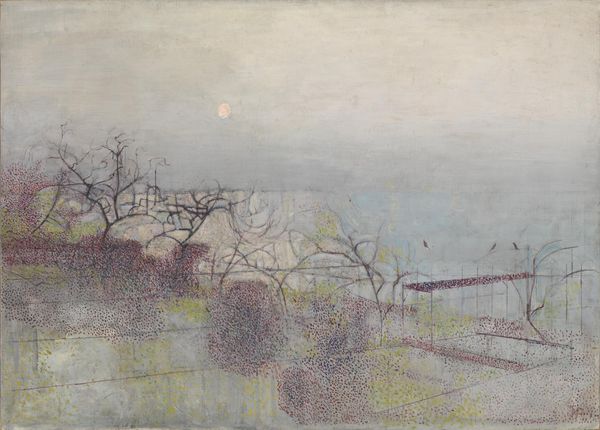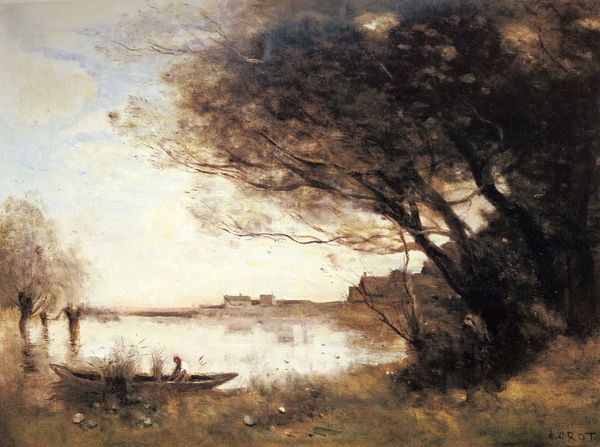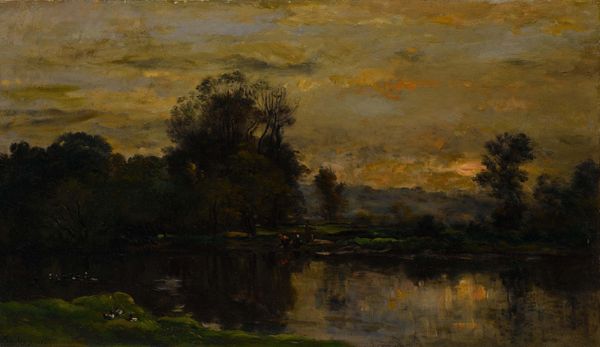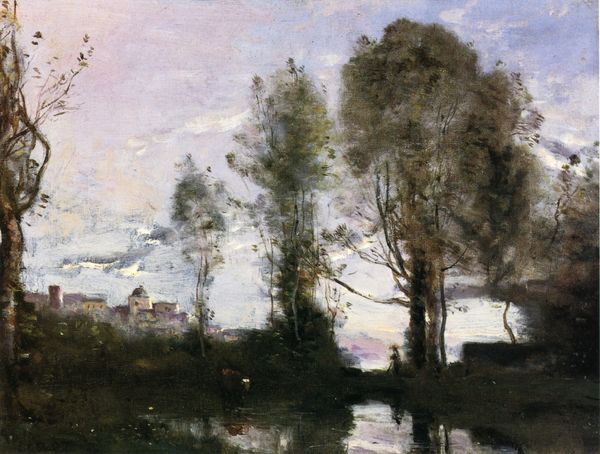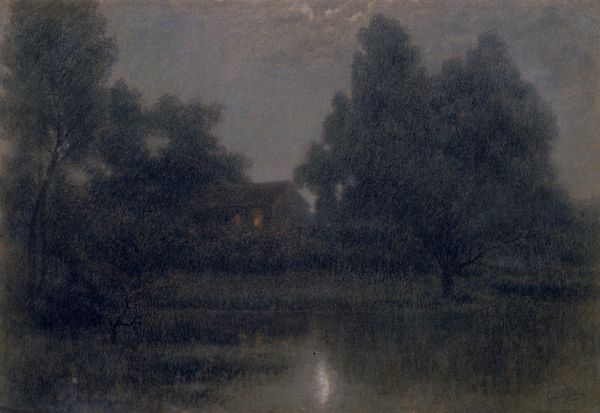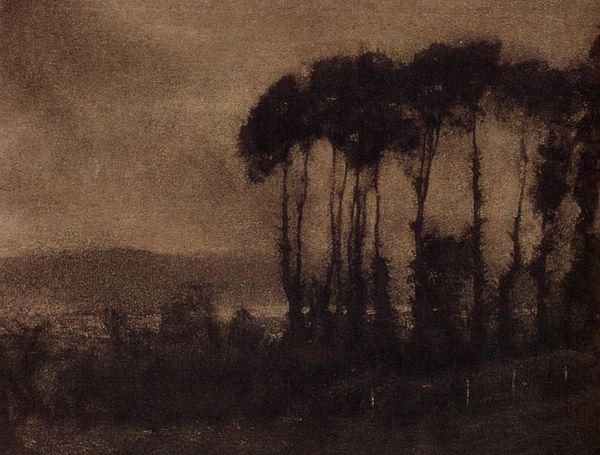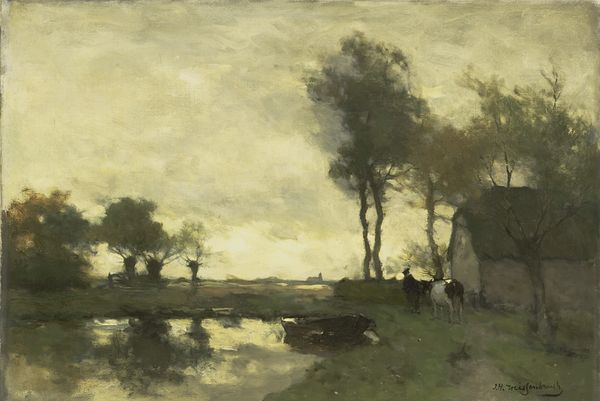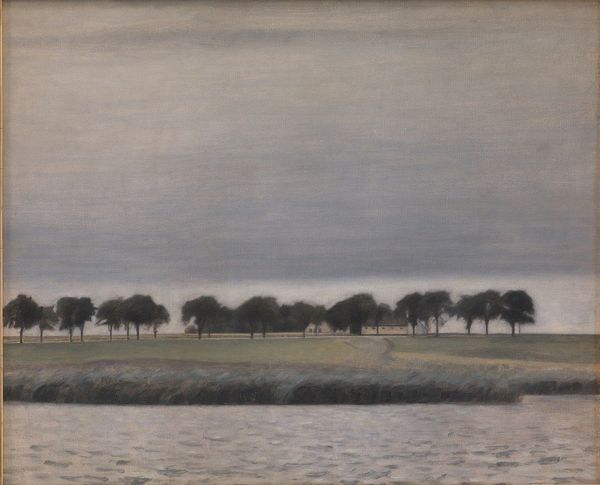
Copyright: Public domain
Editor: We’re looking at "Forest Road near Oranjewoud," painted in 1912 by Jan Mankes. The use of oil paint creates this really muted, almost dreamlike quality to the landscape. There’s a lone figure walking down this path and the whole scene feels very isolated. What do you see in this piece? Curator: Isolation is a key element, I think, particularly if we consider Mankes' personal history. He lived a largely secluded life due to his health, and this impacted his art significantly. How do you see the broader context of landscape painting influencing Mankes here? Do you see it adhering to tradition or trying to redefine the genre? Editor: I think he's doing something new, the realism tag is clear but his realism doesn’t depict nature as grandiose or sublime. This feels quieter, more introspective. Curator: Exactly. It breaks from traditional, heroic landscape painting. This shift reflects the changing role of the artist and the purpose of art within society at the time. There was a growing interest in exploring psychological landscapes and intimate scenes of daily life rather than solely celebrating national identity or the grandeur of nature. It’s interesting how a painting can encapsulate these cultural shifts so subtly. Editor: That's fascinating, I hadn't considered it that way! So, Mankes wasn's just painting what he saw, but commenting on art's role in society? Curator: Precisely. And he’s doing so through the visual language he employs—the muted colors, the simplicity of the composition, and that solitary figure walking away from us, perhaps symbolising a society turning inwards. Editor: It makes you think about who "we," the viewers, are in relation to the landscape in a very different way. Curator: Precisely. And in considering the institutional validation through the museum display we must think about this subtle defiance, because it provides a glimpse into broader dialogues around identity, societal roles, and our complex relationship with the environment, mediated through artistic expression. Editor: This piece really reveals the impact of culture and history on what seems like a simple landscape! Curator: Yes. It reminds us that even seemingly quiet, intimate scenes can resonate with the grand currents of history and artistic discourse.
Comments
No comments
Be the first to comment and join the conversation on the ultimate creative platform.
